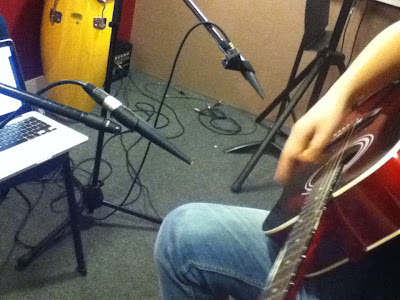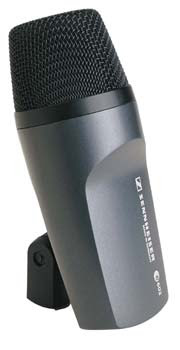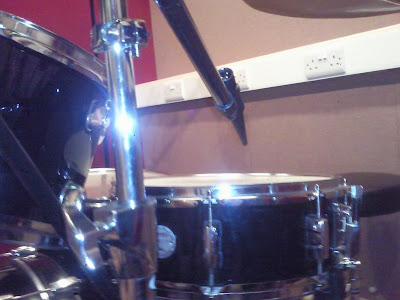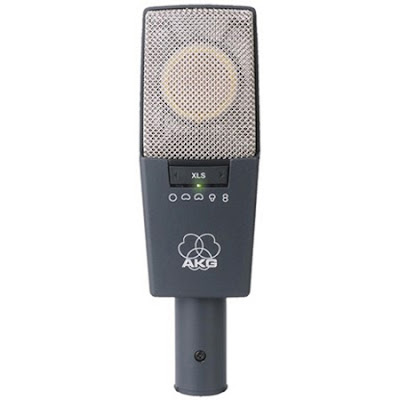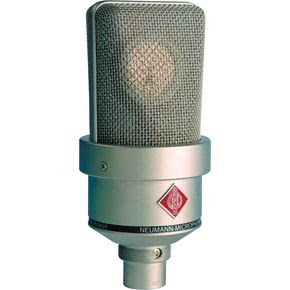Once this was recorded and arranged, I played this through two speaker in a medium-sized hall. I placed a DPA microphone almost to the centre of these speakers, further towards the opposite side of the room, facing up. This microphone picked up the song coming through the speakers, and the natural reverberation created in the hall. This was then fed back to the overall mix to create a natural reverb effect. I then double-tracked the reverberation recording to create an even fuller sound.
The microphone set up for the drums in the same hall:

The DPA microphone set up in the hall, picking up the natural reverberation:

